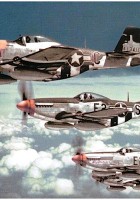
| Sujet | : | Color photos 1939-1945 |
| Description | : | Album of 102 color photos of the Second World War |
| Keywords | : |
World War II colour photo album
Views : 2003
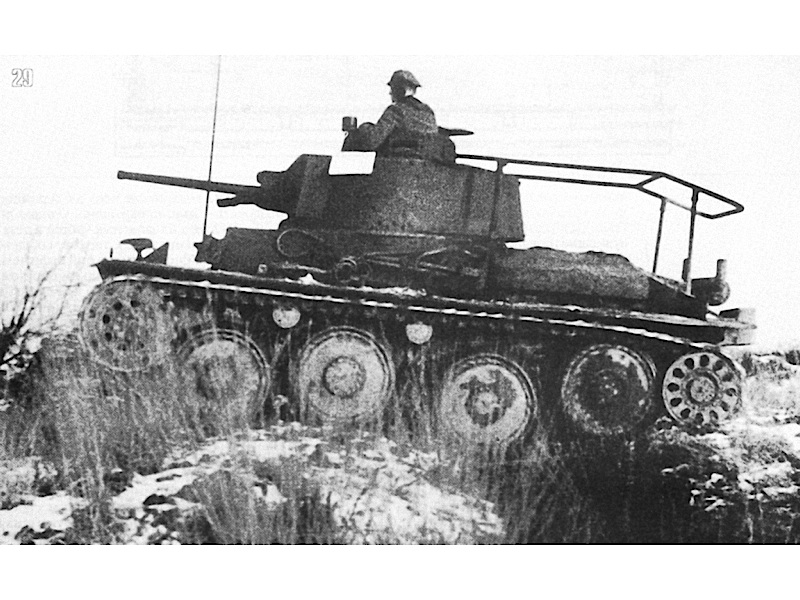
Photos of PzKpfw 38 tanks | |
|---|---|
| Description | Album of 96 photos of tanks PzKpfw 38 |
| Period | World War II |
| Keywords | |
The Panzerkampfwagen 38(t) (ce qui signifiait : « véhicule de combat blindé tchécoslovaque, modèle 1938 ») était le nom donné par les Allemands à un char d’assaut tchécoslovaque fabriqué dans les usines de chars Škoda qu’ils avaient mis au service de leur industrie de guerre durant l’année 1939 avant l’éclatement du confit. Le nom que lui donnait l’armée tchécoslovaque était LT vz. 38. Ce véhicule de combat blindé fut conçu par les Tchécoslovaques à partir de 1935. Il a eu du succès à l’exportation, avec 50 chars exportés vers l’Iran, 24 vers la Suisse et autant vers le Pérou. L’armée tchécoslovaque en commande 150, mais ceux-ci ne sont pas entrés en service avant l’occupation du pays par l’Allemagne en 1939. Les occupants allemands ont ordonné la poursuite de la production entre 1938 et 1942. Au total, lorsque la production cessa en juin 1942, 1411 Panzerkampfwagen 38(t) (modèles A à G) avaient été fabriqués.
Views : 3296

Henschel HS123 | |
|---|---|
| Publisher | Wydawnictwo Militaria |
| Series | Aviation Military |
| Period | World War II |
| Réf | 004 |
Signed documentation Wydawnictwo Militaria the magazine "Henschel HS123 - Wydawnictwo Militaria 004 - Book" .
The Henschel Hs 123 fut le dernier sesquiplan de combat de la Luftwaffe. L’appareil répondait à un programme de la Luftwaffe pour un avion de chasse apte au bombardement en piqué. Il était construit entièrement en métal (une rareté pour un sesquiplan, même pour l’époque) et possédait des formes assez massives. Il fit son premier vol le 1er avril 1935 et les premiers appareils de série intégrèrent la Luftwaffe in the fall of 1936.
Il n’intégra les unités de chasse que durant une très courte période et ne fut construit qu’à 260 exemplaires pendant une année, en raison de sa conception obsolète et l’arrivée prochaine de chasseurs aux performances plus prometteuses (tel que le Messerschmitt Bf 109). Il fut donc surtout employé comme avion d’assaut et bombardier en piqué, notamment durant le début de la Seconde Guerre mondiale, lors des campagnes de Pologne, de France et durant les premiers combats en Russie. Obsolète, il fut ensuite reversé aux écoles de bombardement en piqué.
Source: Henschel HS123 on Wikipedia>
Views : 1140
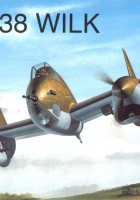
PZL P.38 Wilk | |
|---|---|
| Editor | Wydawnictwo Militaria |
| Serie | Aviation Military |
| Period | ww2 |
| Ref | 003 |
Une documentation signée Wydawnictwo Militaria la revue «PZL P.38 Wilk – Wydawnictwo Militaria 003» .
The PZL.38 Wilk (“wolf”) (PZL-38) was a Polish fighter-bomber developed and manufactured by PZL state factory in 1937. It was a twin-engine low-wing cantilever monoplane of metal construction, metal covered. The fuselage was semi-monocoque, elliptic in cross-section. The crew of two – pilot and rear gunner/bombardier/observer sat under separate canopies, far from each other, fitted with dual controls. A canopy of pilot’s cockpit opened aside. Three part wing, outer parts were built around light closed profiles.
Wings fitted with slats and split flaps. Twin vertical stabilizers. Engines in underwing nacelles. Retractable landing gear, with main wheels retracting into engine nacelles, and a rear skid. Three-blade variable (P.38/I) or two-blade fixed propellers (PZL.38/II). Fuel tanks in wings – 500 l. Armament: fixed 20 mm FK-A gun (planned) and two 7.92 mm PWU wz.36 machineguns in the fuselage nose, twin 7.92 mm PWU wz.37 machinegun of a rear gunner, hiding in the fuselage. It could carry one 300-kg bomb.
Source: PZL P.38 Wilk4 sur Wikipedia>
Views : 1371
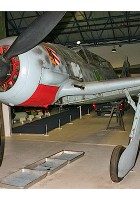
Focke-Wulf Fw 190S | |
|---|---|
| Pays | Germany |
| Type | Bomber hunter |
| Description | Album de 24 walk-around photos of the fighter-bomber Focke-Wulf Fw 190S |
Photo gallery on a Focke-Wulf Fw 190S, The Focke-Wulf Fw 190 He was a single-seat, single-engine fighter-bomber used by Nazi Germany during World War II, from 1941 until 1945. The FW-109 never succeeded in completely replacing the Messerschmitt Bf 109 as the Luftwaffe's main fighter, although it was superior to it. It was produced in more than 20,000 copies. Thanks to its versatility from a modular construction, it gave birth to a large number of derivative models that allowed it to replace the Junkers Ju 87 (Stuka) as a ground troop support aircraft, and the Messerschmitt Bf 110 as a heavy fighter to fight the bombers, when the latter two aircraft became far too vulnerable to continue being sent into combat. He was the first true fighter-bomber of the Luftwaffe.
Source: Focke-Wulf Fw 190 on Wikipedia
Views: 3110
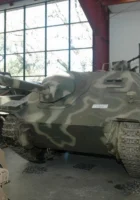
Jagdpanzer 38(t) - Hetzer- Sdkfz.138/2 | |
|---|---|
| Pays | Germany |
| Type | Tank hunter |
The Jagdpanzer 38(Sd.Kfz. 138/2) known as Hetzer (que l’on peut traduire approximativement par Traqueur ou Trappeur en allemand), est un chasseur de char allemand de la Seconde Guerre mondiale, construit sur la base du châssis du Panzer 38(t) tchèque. Le Jagdpanzer 38(t) est conçu pour obtenir un meilleur rapport qualité-prix que les ambitieux programmes des Jagdpanthers et Jagdtigers de la même période. Basé sur un châssis existant et fiable, il évite ainsi les problèmes mécaniques inhérents aux blindés plus lourds.
Source: Hetzer on Wikipedia
Views : 5340
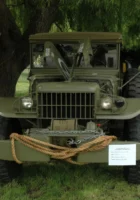
Dodge WC-57 | |
|---|---|
| Pays | USA |
| Type | Military vehicle |
| Period | World War II |
Photo gallery on a WC-57 3-4 Ton 4X4, Dodge WC is a series of military vehicles built by the Dodge brand during the Period of World War II. WC57 : Command Car avec treuil (6 010 exemplaires) Longueur : 4,46 m Hauteur : 2,07 m Poids : 2 560 kg Largeur : 2,00 m Charge utile : 800 kg Même modèle que le WC-56, le treuil en plus.
Source:Dodge WC-57 on Wikipedia
Views : 4551

PZL P.24 | |
|---|---|
| Editeur | Wydawnictwo Militaria |
| Série | Aviation Military |
| Période | Seconde guerre mondiale |
| Réf | 002 |
Une documentation signée Wydawnictwo Militaria la revue «PZL P.24 – Wydawnictwo Militaria 002» .
Le PZL P.24 est un chasseur polonais de la fin des années trente. Avion valable mais de conception ancienne, c’était une version conçue pour l’exportation du PZL P 11. Aucun P24 n’a été utilisé par la Pologne. Le premier PZL P 24 vola en mars 1933. Monoplan à ailes hautes en forme d’ailes de mouettes caractéristiques, avec un train fixe et une cabine fermée, muni d’un moteur radial, avec pour armement 2 canons et deux mitrailleuses installées dans les ailes, ses performances étaient comparables au Fiat CR.42 Falco italien et au Gloster Gladiator britannique.
Source: PZL P.24 sur Wikipedia>
Views : 1125
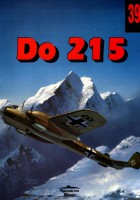
Dornier Do 215 | |
|---|---|
| Publisher | Wydawnictwo Militaria |
| Series | Aviation Military |
| Period | World War II |
| Réf | 039 |
Signed documentation Wydawnictwo Militaria magazine "Dornier Do 215 - Wydawnictwo Militaria 039" .
The Dornier Do 215 is a light bomber, aerial reconnaissance aircraft and later a night fighter, produced by Dornier Werke GmbH originally produced for export in the fire of the war it served in the Luftwaffe. Like its predecessor, the Dornier Do 17 it inherited the title "flying pencil" because of its thin fuselage. The successor to the Do 215 was the Dornier Do 217.
Source: Dornier Do 215 on Wikipedia
Views : 656